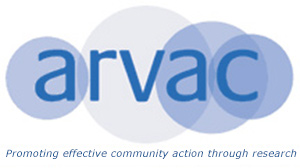The Taking Yourself Seriously Project (TYS) explores how arts methologies can facilitate social cohesion within communities. TYS is situated into three situation specific community spaces, one of which is a secondary school in an area where there have been issues of social cohesion.
Co-production, ethics and prioritising young people’s voices, alongside a relinquishing of ‘adults’ as the knowledge experts has been key to this exploration, and to the generation of different understandings of social cohesion within the school context.
The research team within the school is composed of three TYS project staff and 4 Year 8 pupils. The aim is to coproduce the research by enabling young people to explore what social cohesion means to them, and how they and other young people in the school understand and recognise cohesion in action.
The young people are using creative tools such as photography, filmmaking and audio recording as they undertake their research. In one particular session, the young people spent some time showing us around the school whilst photographing their favourite spaces/places. We asked them what they thought social cohesion was within the school; they said it was making friends, having safe and favourite places where they could be together and being able to be themselves.
Looking through the photos they’d taken, the young people explained why they had taken the pictures that they did, and talked through what the different spaces in the school meant to them.
For one young woman the library was an unsafe space. She told us that when she was in Year 7 she had overheard other young people saying not very nice things about her and now she doesn’t like going into the library. One of the young men explained that he didn’t like the library as it meant he had to read. He also said that the library was a safe place because it was quiet and calm.
The canteen was a safe and unsafe place. It was safe because there were counters, and lots of teachers and dinner ladies about so it was watched. It was unsafe as lots of fights happen there and it can be very busy and loud.
The school is very good at recognising success. Around the school several walls are covered in framed photographs, letters and artifacts that celebrate pupil achievement, as well as former students who have achieved myriad goals. Two of our young researchers stated that they liked this space as they could look at the photos and think about the things they want to achieve.
All of the young people liked the music room. Our young female researcher plays piano, two of the young men also played instruments and one of them explained that he plays the drums as this helps him when he is frustrated and angry. Making a rhythm helps him to calm down and get into a different headspace. Another young researcher said that he likes it when everyone plays their instruments together and is part of a band making lots of noise. Each of them said that music was a way of communicating, of using a different language to work together.
We asked the children to choose their favourite photo and to use this as inspiration to create something on a large piece of paper that reflected what social cohesion in the school meant to them. Whilst we were making, one of the team asked them what they didn’t like about school and they shared some of the things they found difficult. They felt that some young people were treated differently than them, and that these young people can get away with things that they cant, like wearing trainers and being given more time to complete activities set in class. They felt that they were treated ‘less better’ than these young people.
Another young person then disclosed how his experience of a family trauma meant that he got frustrated and didn’t always want to behave in school, and when his friends had been unsupportive, he struggled to not misbehave due to his anger.
All of the young people made something different to contribute to the collage. They all returned to the significance of music, and how this brings everyone together; even if you speak different languages you can still communicate with others through the notes and rhythms, as you know what the next person is doing when they play their instruments. Their reflections on the importance of music lead them to add a plasticine circle to their collage. The young people each made a plasticine sausage that were joined together to make a circle. They said that the circle is because music brings people together. They wrote inside their circle “ Our music community that brings us together”.
In creating space for young people to be the ‘expert’ and self-define their understanding and experiences of social cohesion what became clear is that they negotiate a lived-experience of social cohesion daily. This negotiation involves wrestling with ‘othering’ and ‘being othered’, living with the nitty-gritty issues of real-life and the struggles of juggling these within school life; they are also acutely aware of the juxtaposition of different spaces being both safe and unsafe inside and outside of school.
